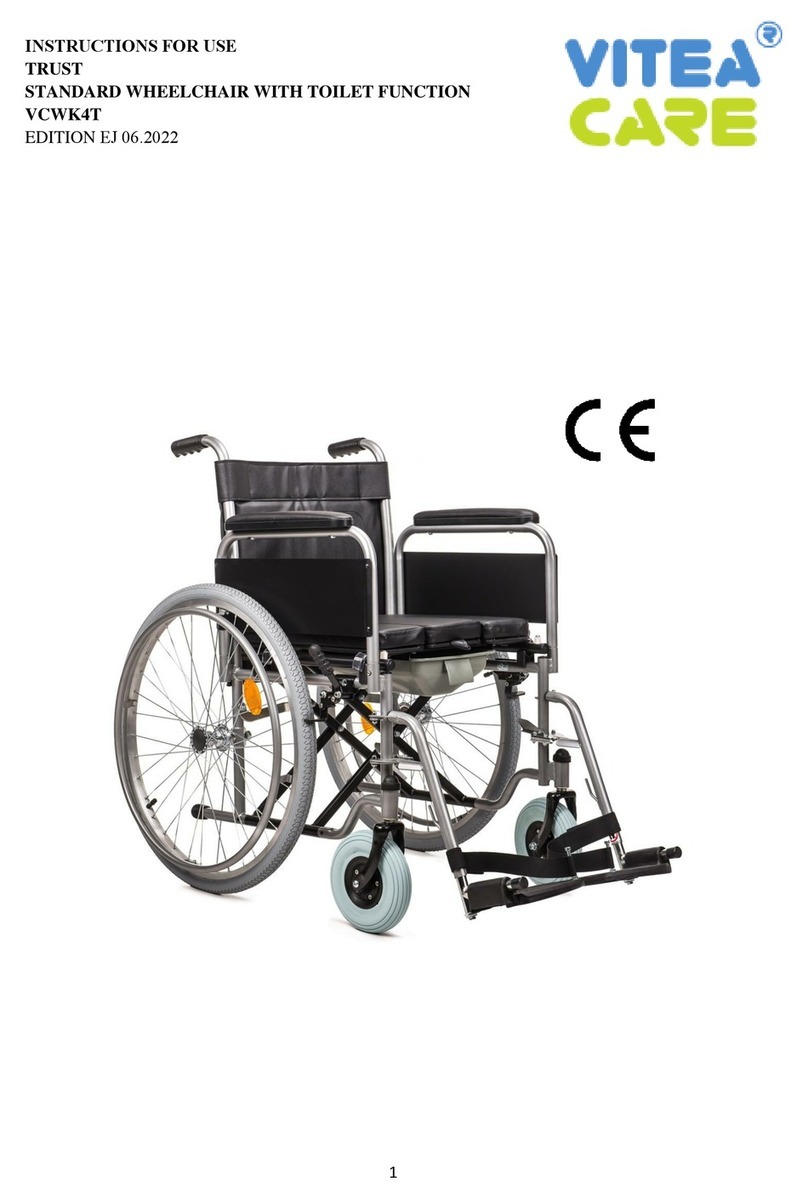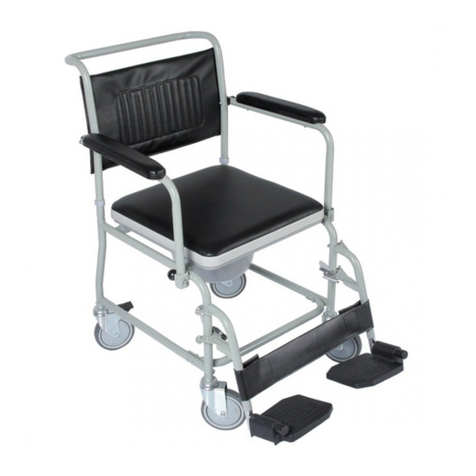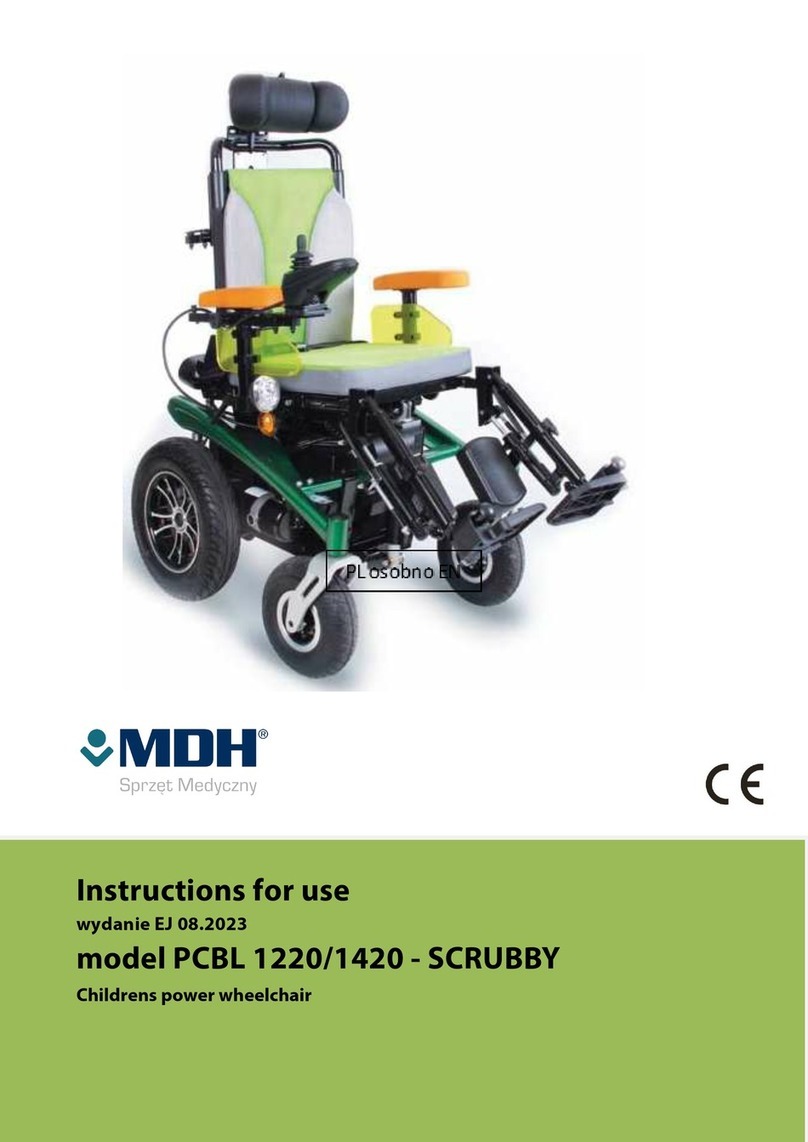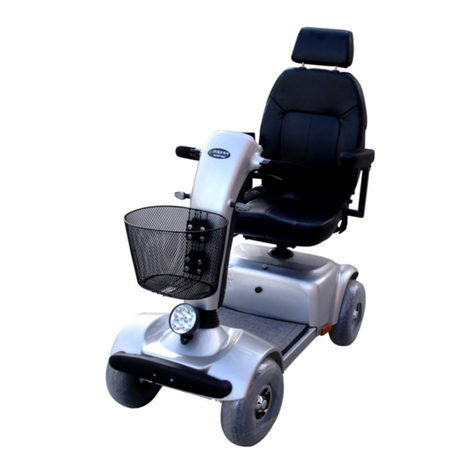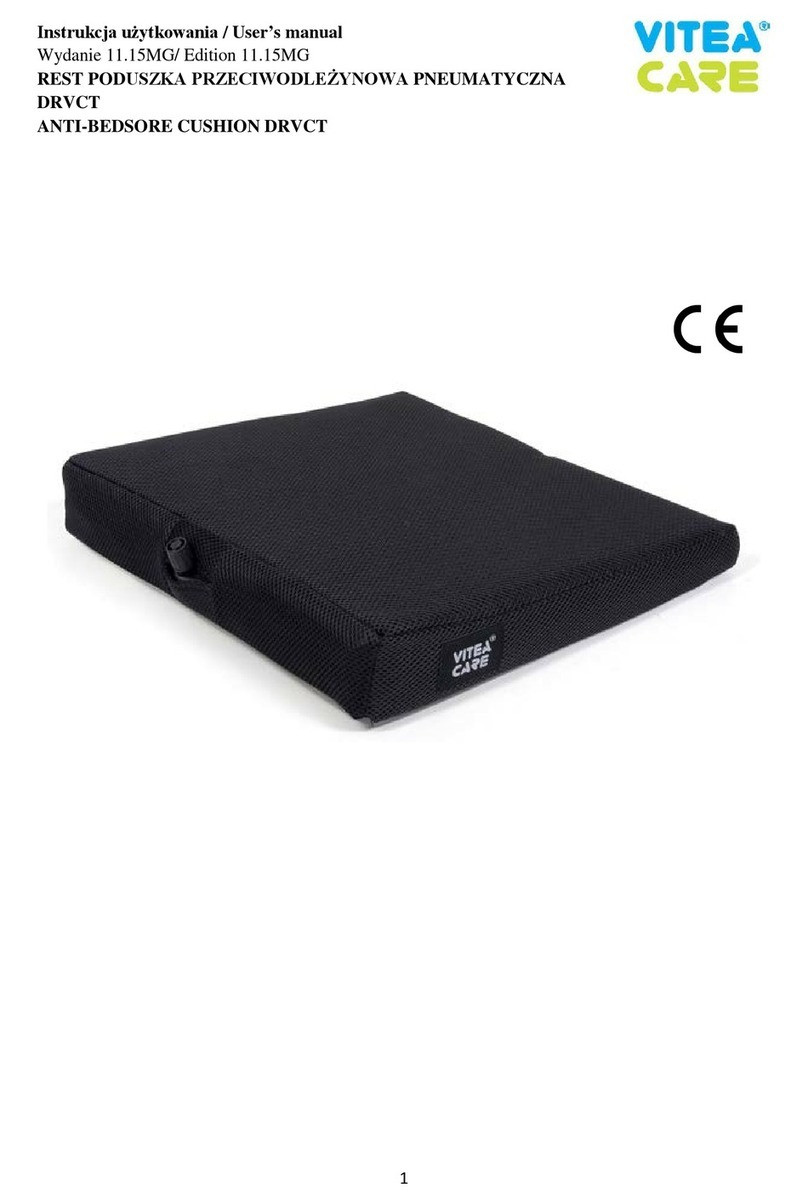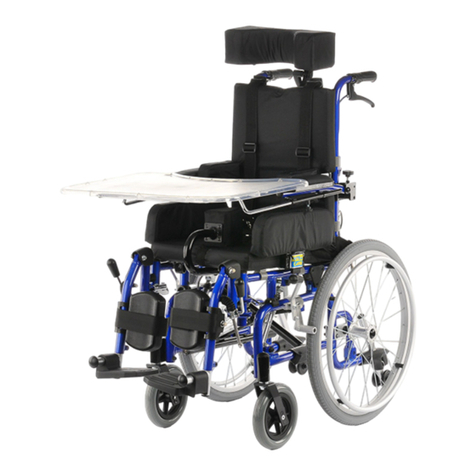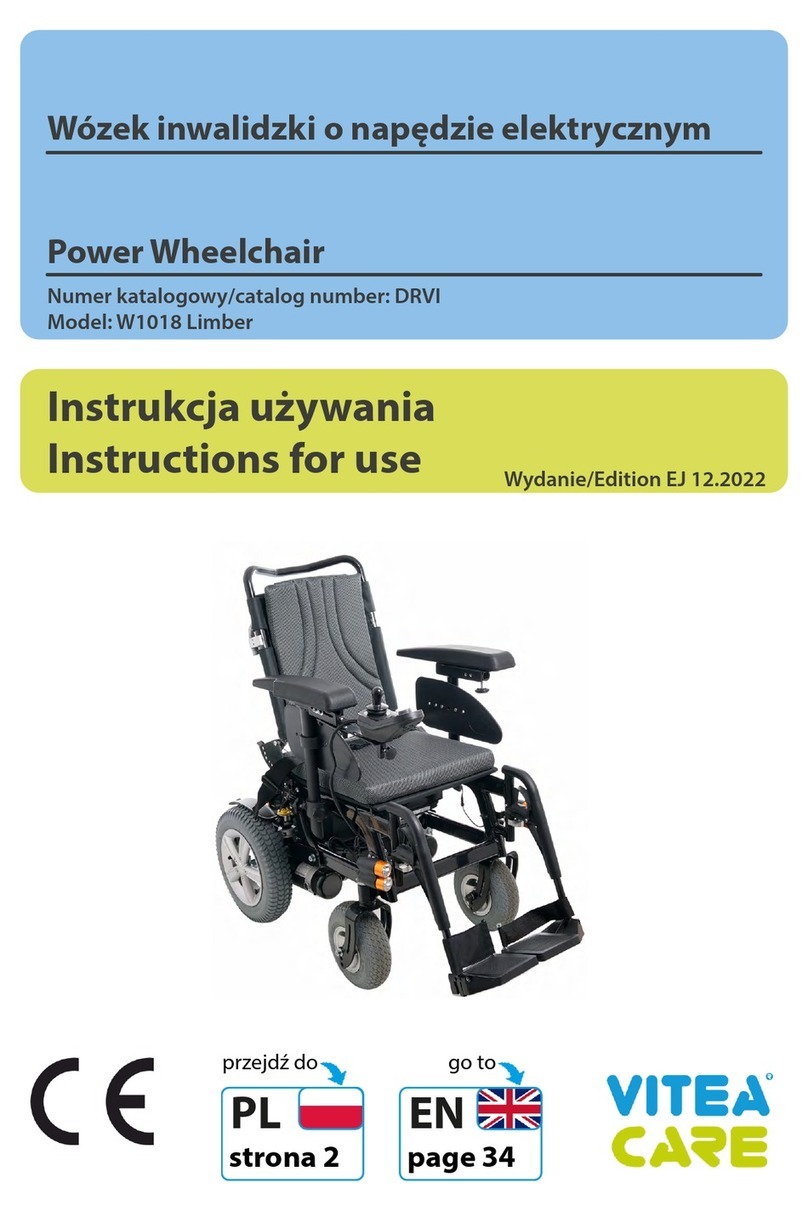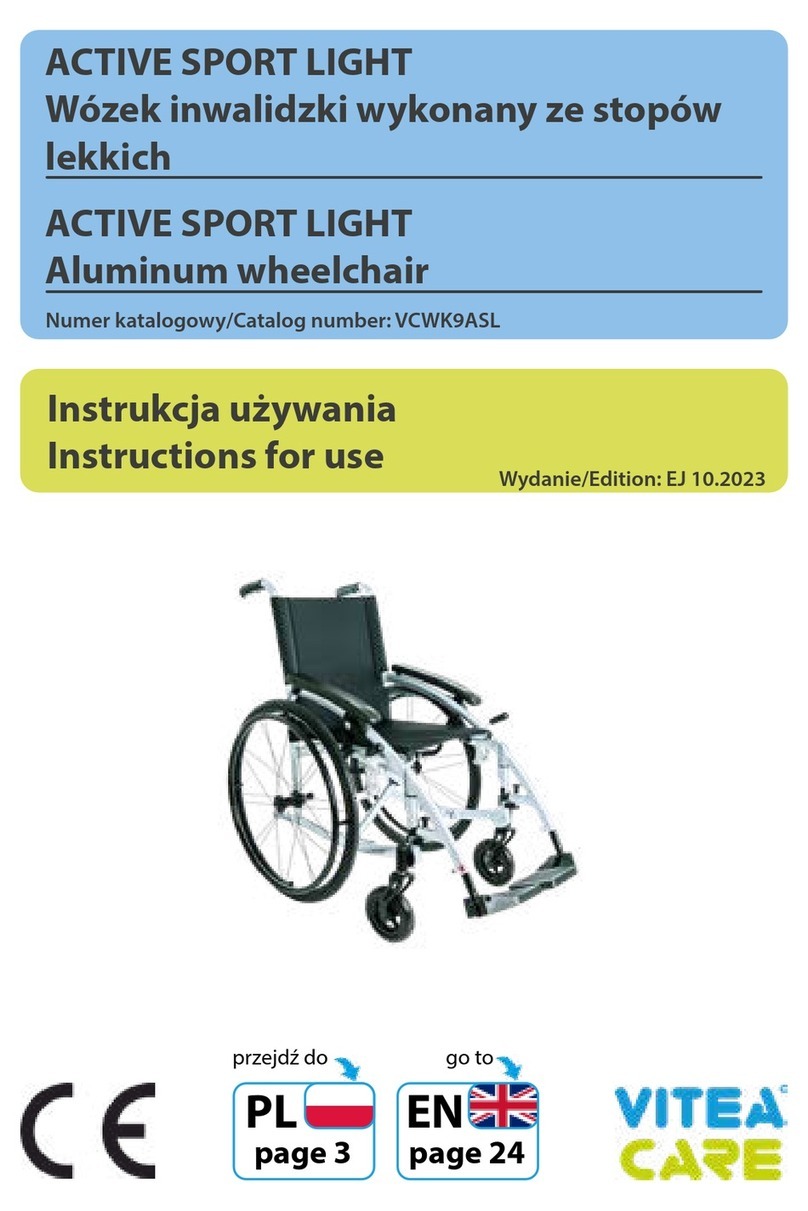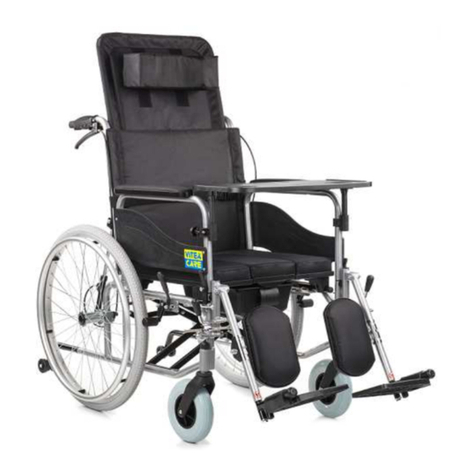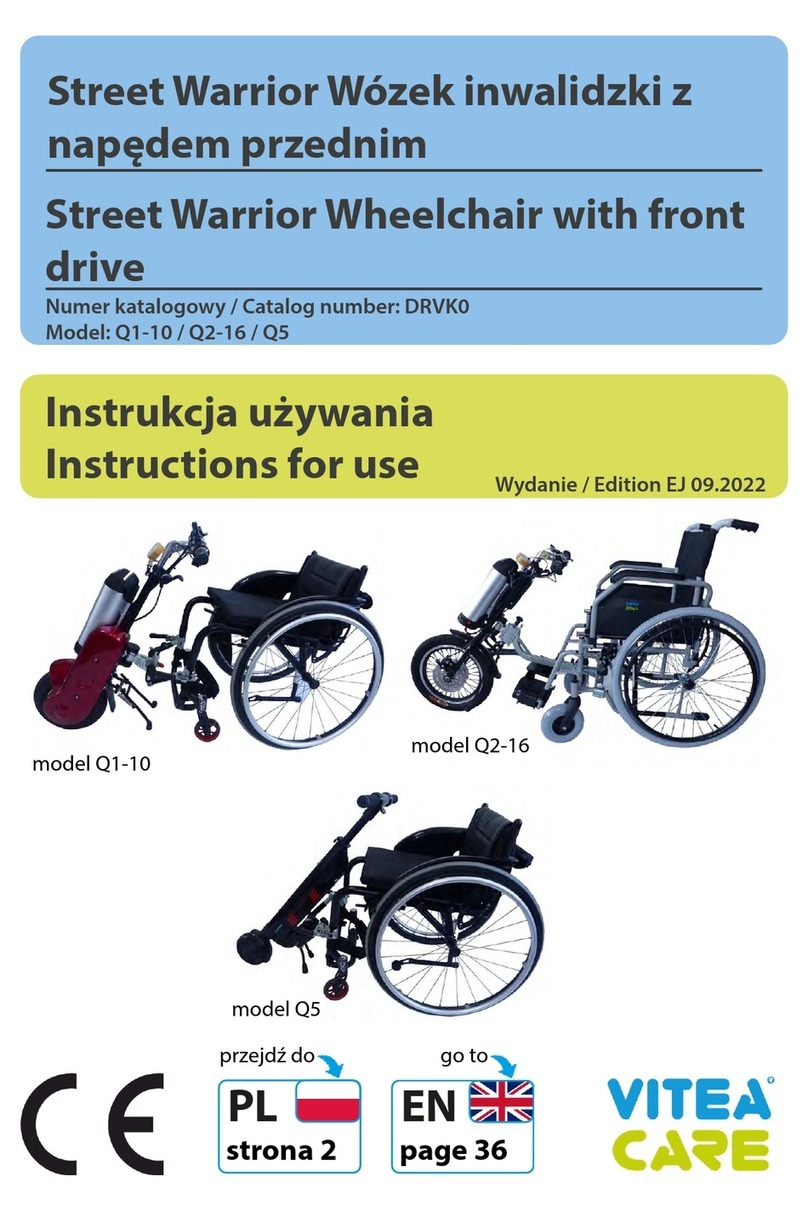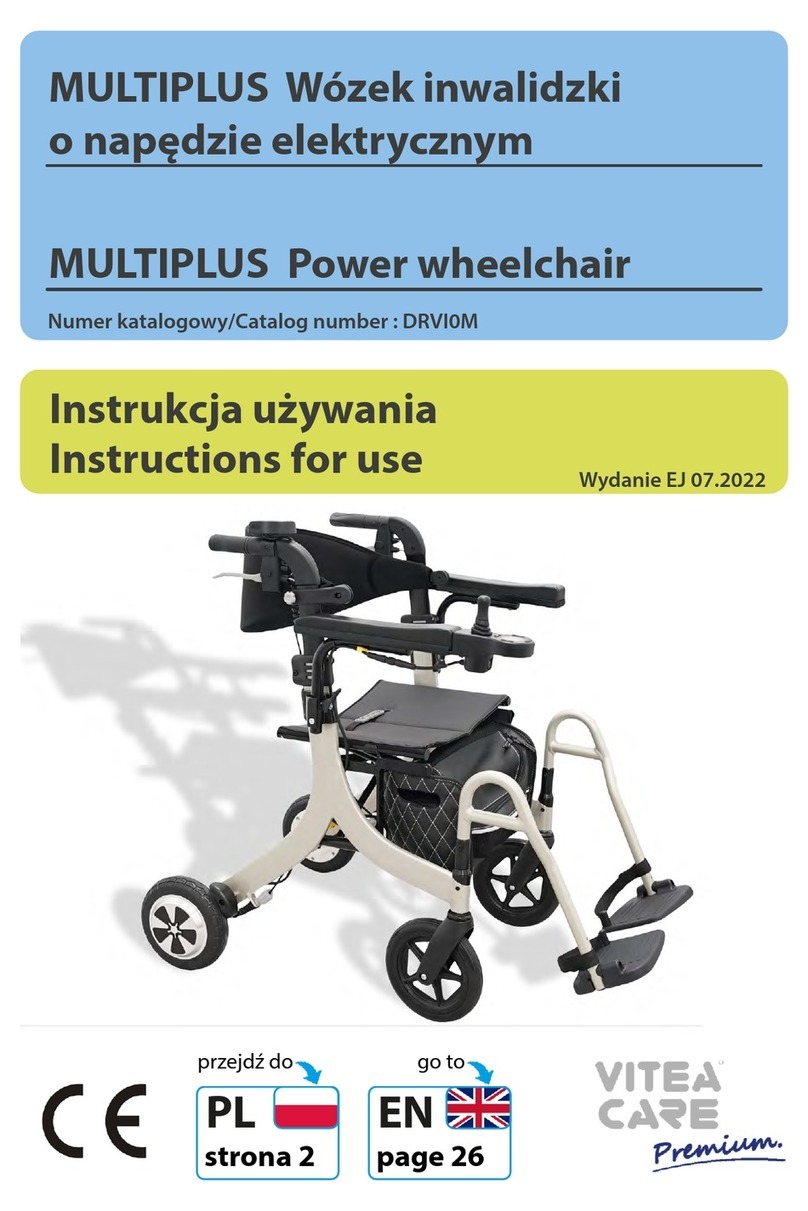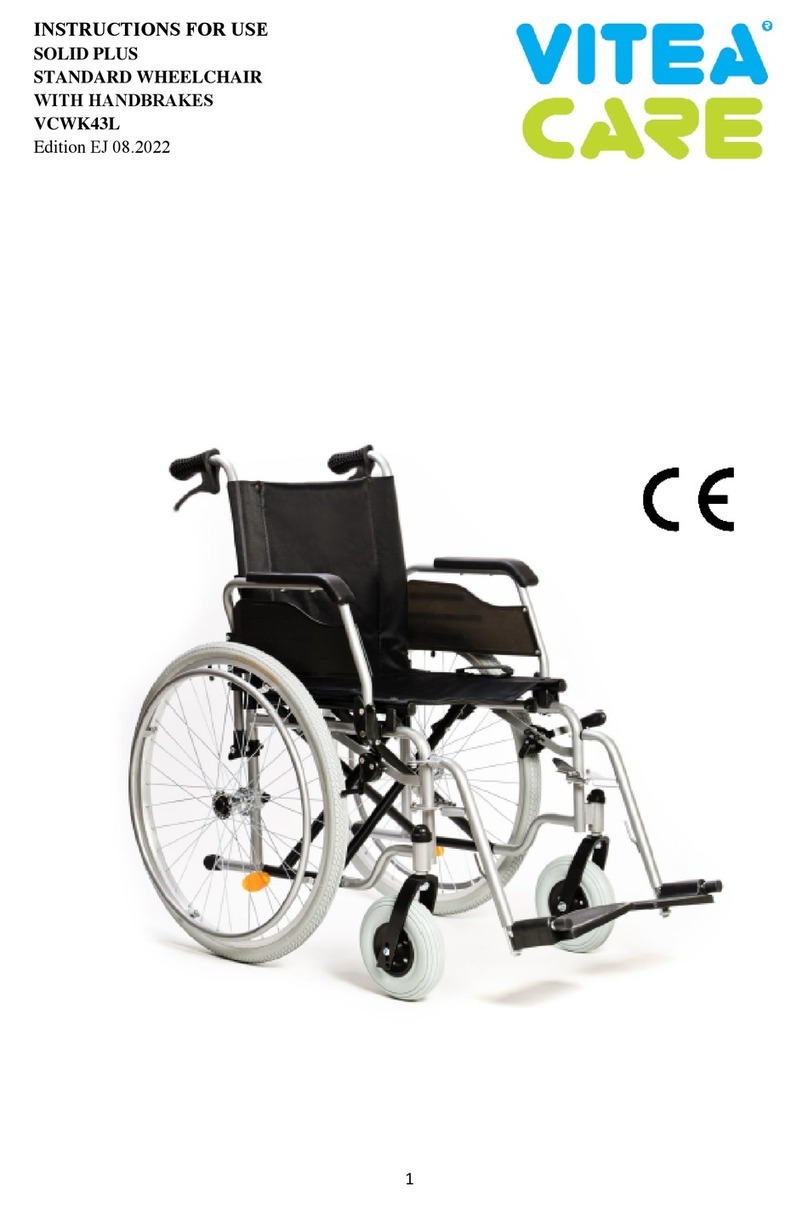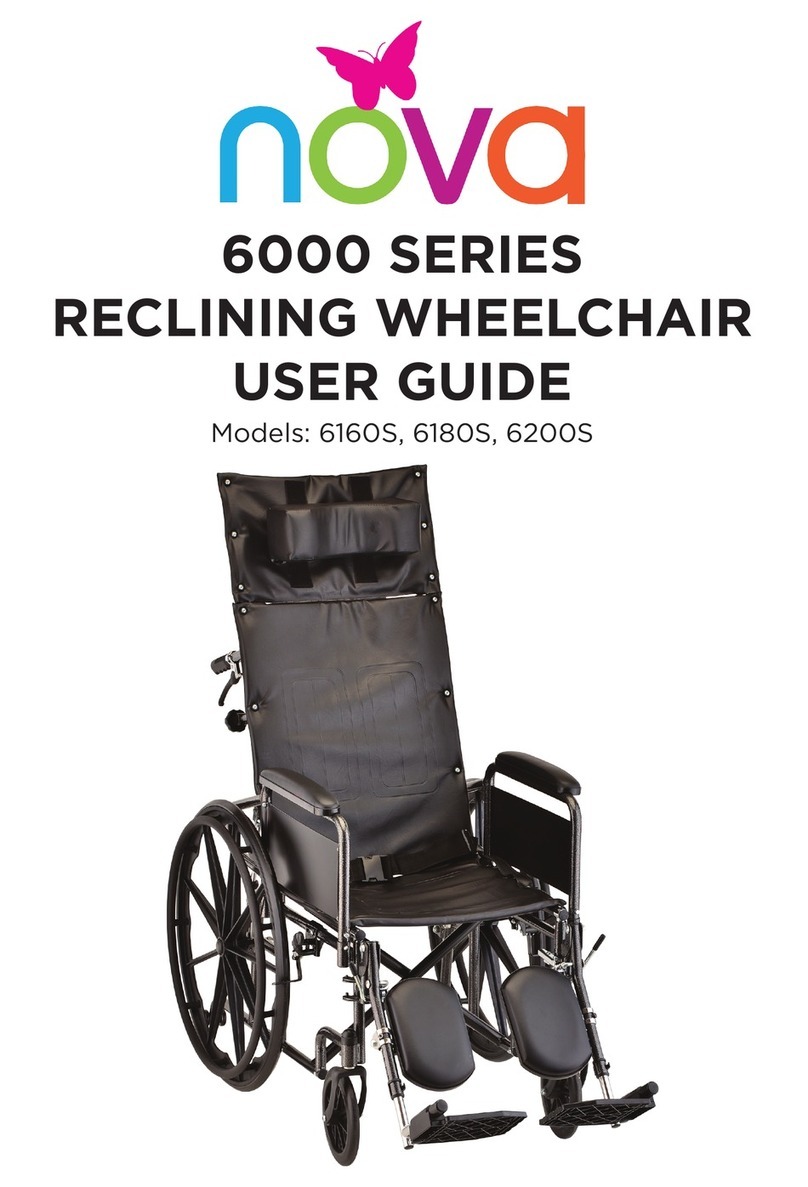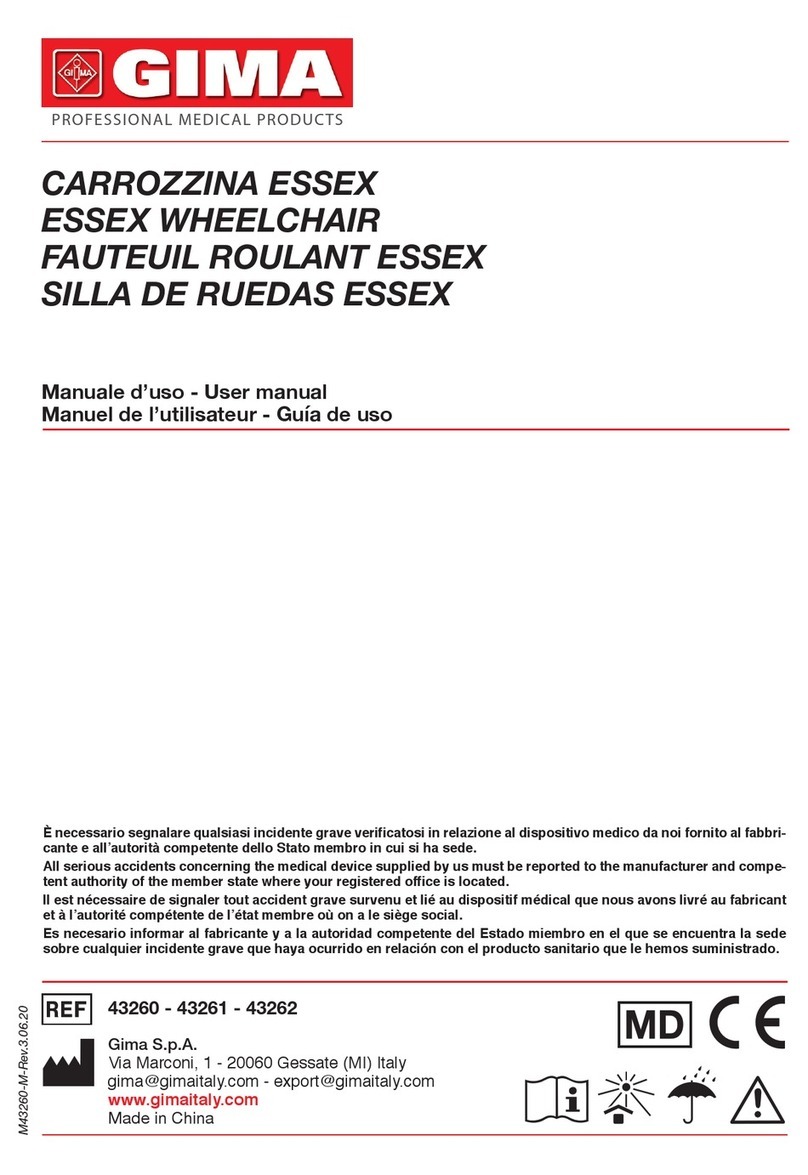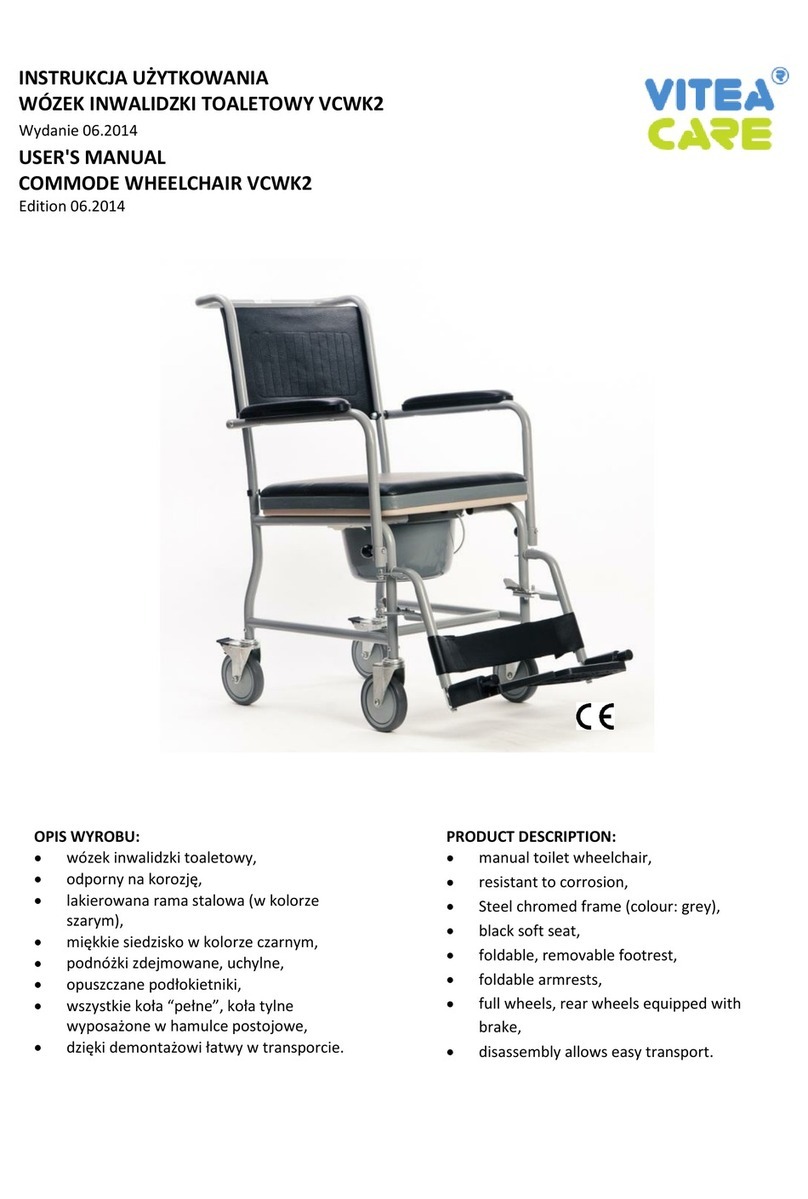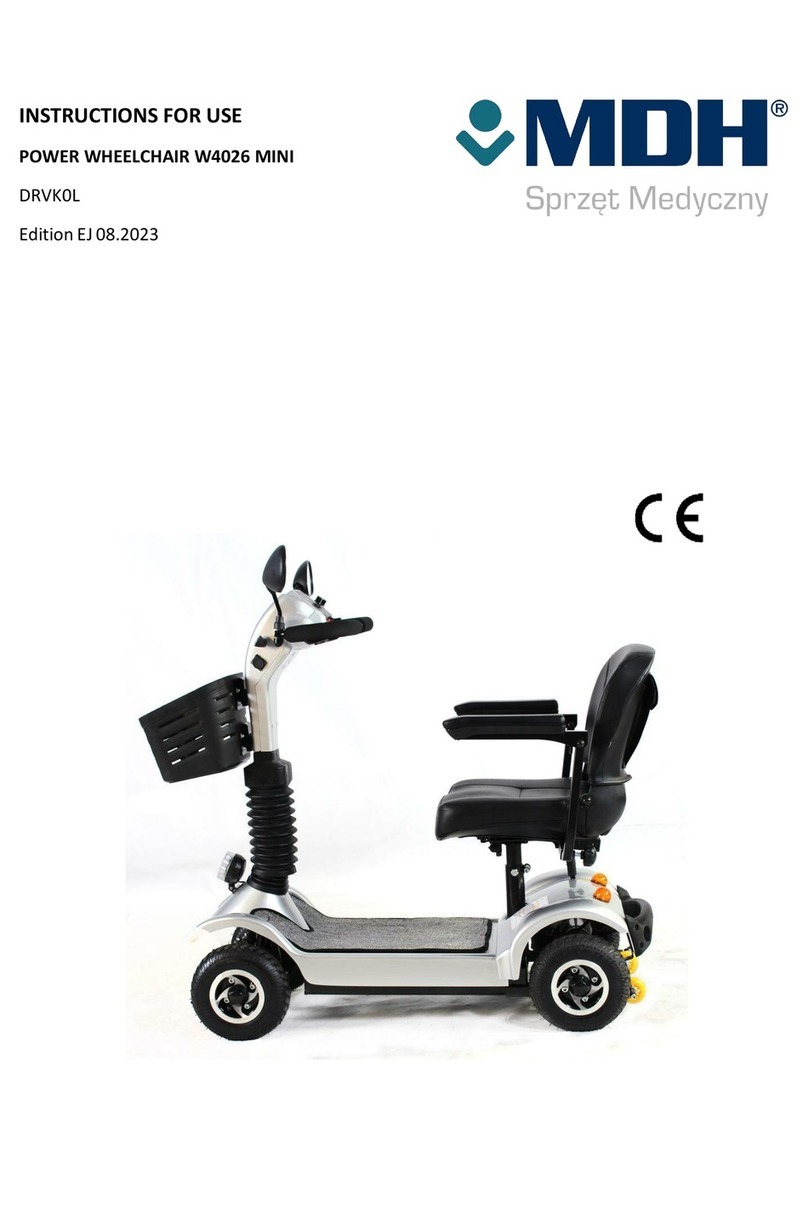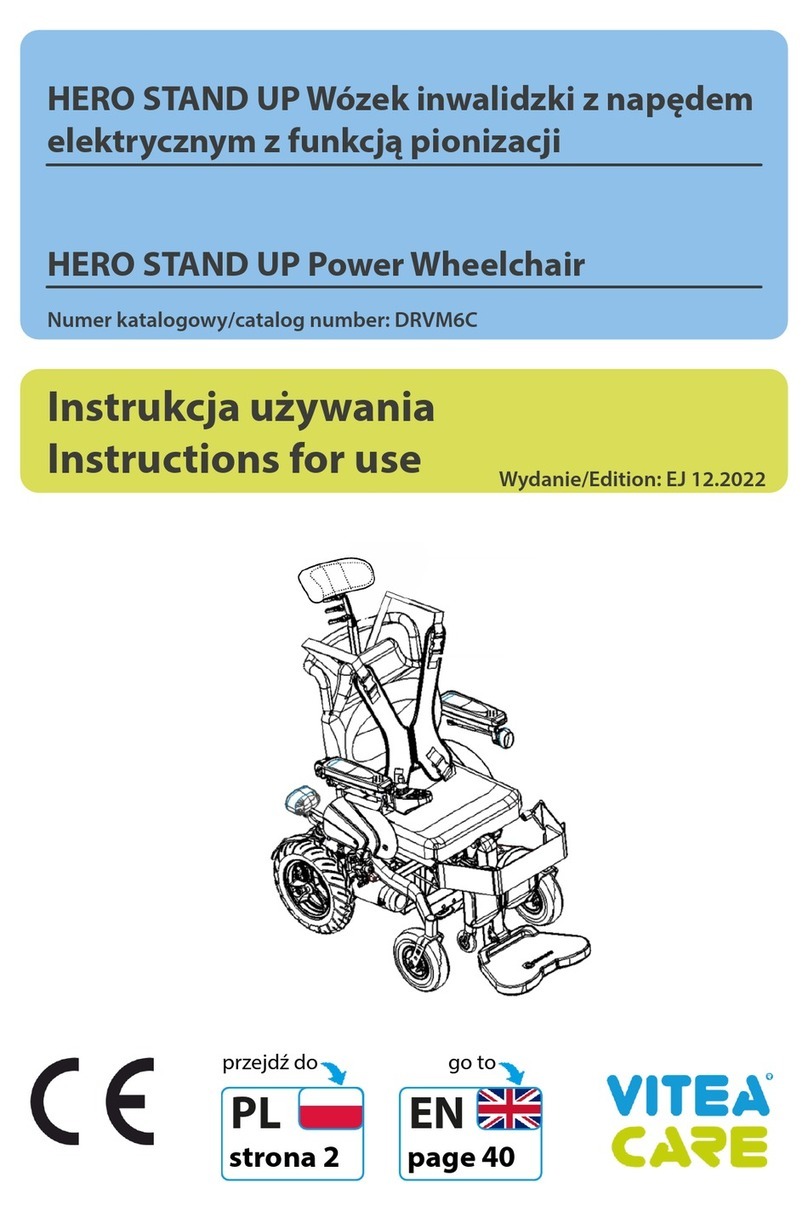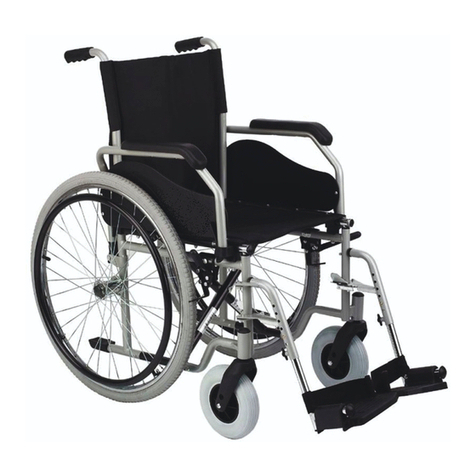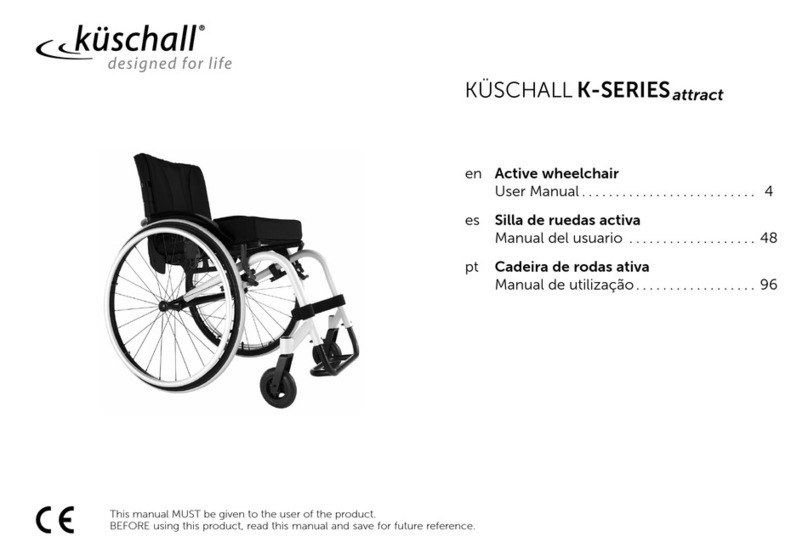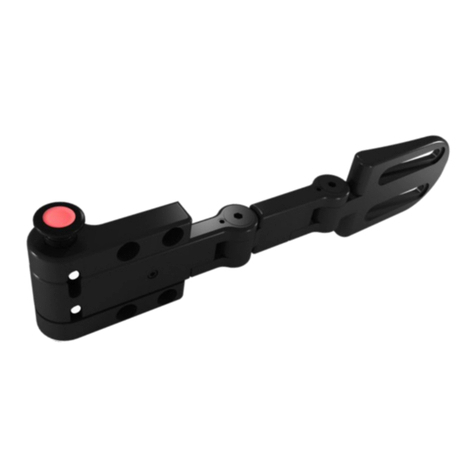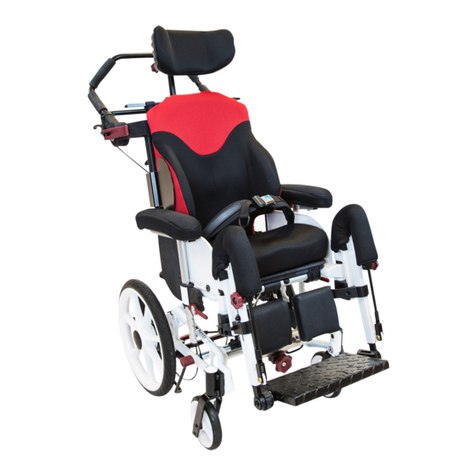
11
w) Należy regularnie kontrolowaćciśnienie w
oponach. Przy zbyt niskim ciśnieniu w
oponach niżzalecane, skuteczność działania
hamulców może znacznie sięzmniejszyć!
x) Podczas podnoszenia przedmiotów z podłogi
nie należy sięgaćdo tyłu, ponieważgrozi
przewróceniem siędo tyłu.
y) Podczas sięgania przedmiotów należy unikać
nadmiernego wychylania sięz wózka gdyż
grozi to upadkiem.
z) Nie należy sięgaćprzedmiotów z podłogi z
przodu, jeżeli wymaga to wysunięcia sięz
wózka.
aa) Wszelkie czynności takie jak wsiadanie,
zsiadanie, zmiana pozycji pacjenta, postój
wózka wymagajązablokowania hamulców
kół jezdnych.
bb) Nie należy pozostawiaćpacjenta w wózku
(nawet przy zaciągniętych hamulcach) na
zjazdach, rampach, półpiętrach itp.
cc) Należy każdorazowo po montażu kół
sprawdzićczy zadziałała blokada osi złącznej
koła, przy montażu powinno byćsłyszalne
charakterystyczne kliknięcie zatrzasku,
dodatkowo należy silnie szarpnąć koło bez
wciskania
dd) Używanie hamulca postojowego podczas
jazdy może grozićwypadkiem ze wszystkimi
konsekwencjami
ee) Zawsze po każdej regulacji, należy dokonać
sprawdzenia poprawności działania hamulca
ff) W przypadku zanieczyszczenia ogumienia
kół poprzez oleje, smary, wodęczy inne
środki może nastąpićzmniejszenie
efektywności hamowania.
gg) Po długiej eksploatacji wózka może nastąpić
osłabienie siły hamowania spowodowane
powstaniem luzu między sworzniem
dociskowym hamulca a oponąkoła. Istnieje
możliwość samodzielnego wyregulowania
hamulców postojowych. W tym celu należy
poluzowaćśruby blokujące położenie
mechanizmu hamulca, przesunąć cały
mechanizm w stronękoła do takiego
położenia aby po ponownym załączeniu
hamulca, koło nie obracało się(test
poprawności regulacji przeprowadzićna
wózku z pacjentem). Po zakończeniu
regulacji ponownie zabezpieczyćpołożenie
mechanizmu śrubami blokującymi.
cc) Using the parking brake while driving may
result with an accident with all its
consequences.
dd) After each wheelchair adjustment, it is
always necessary to check the correct
operation of the brake.
ee) Oil, grease, water or other chemicals, may
cause that brakes may have reduced
effectiveness.
ff) Strength of the breaking intensity may be
reduced after long exploitation of the
wheelchair. You are allowed to adjust breaks
yourself. In order to do that you must loosen
the screws locking the position of the break,
move the mechanism of the break towards
the wheel so that the wheel will not rotate
when break will be on again (try the
adjustment with the user sitting on the
wheelchair). After final adjustment secure
back the mechanism with the screws.
gg) It is extremely important to keep all
wheelchairs components clean in order to
maintain the product parameters.
hh) Storing the wheelchair in areas with very
high humidity (baths, laundry, etc.) or in the
open air, also the lack of hygiene causes
rapid loss of operating parameters and
aesthetic of the product.
ii) It is unacceptable to use the wheelchair after
discovering any visible or detectable
damages or when the wear of some parts may
cause an accident. All the repairs need to be
performed by a skilled personnel and during
the warranty period only by the
manufacturer's service.
jj) In case of wheelchair fitted with pumped
wheels You should not exceed the maximum
permissible inflation pressure of the wheels,
the value is indicated on the tire wheels.
kk) During transport (e.g. In the trunk), do not
burden stroller, it may weaken or damage its
structure.
ll) Keep out of the reach of children under five
years of age.
mm) Keep extreme caution while
unfolding / folding the wheelchair, lack of
attention may result in finger trap by
elements of the area of:
-joining and removing the footrest,
-brakes,
-while folding the wheelchair around moving
parts.




















